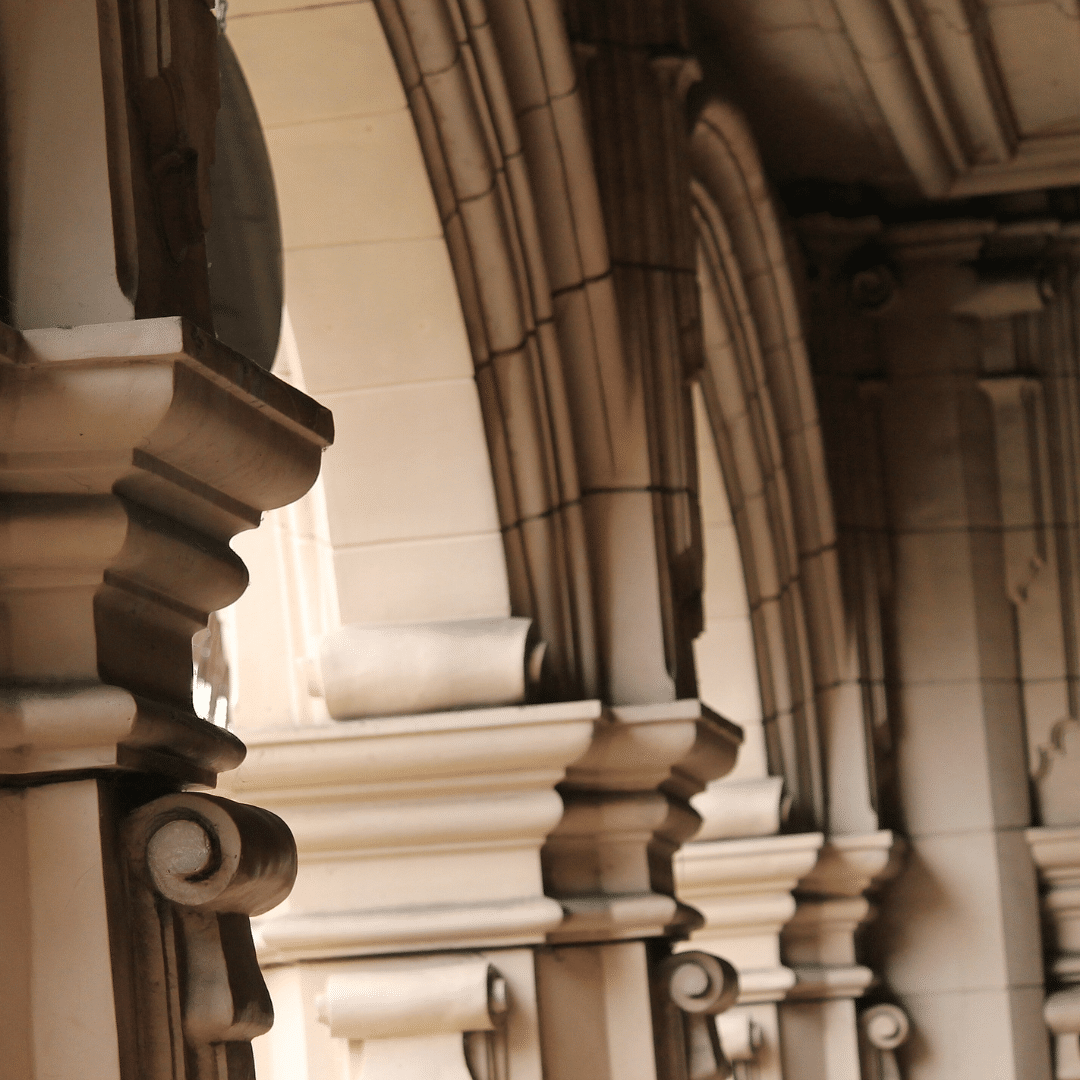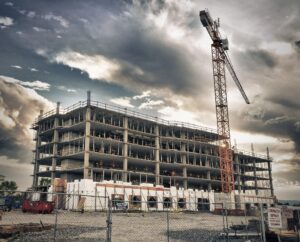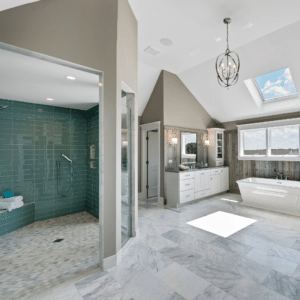Remnants of the Roman Empire linger in archeological sites across Europe and Northern Africa. But Roman design is about more than crumbling ruins—it lives on in how Ancient Rome influenced modern architecture for centuries to come.
We see the enduring impact of Roman architecture in the modern use of columns, arches, and domes. Likewise, The ancient Romans’ innovative approach to concrete has had a lasting impact on modern construction. Similarly, roads, sewers, and aqueducts greatly influenced modern infrastructure, shaping how we live and function in cities today.
Adopting and Improving Architecture
The Roman Empire was known for adopting and improving ideas from other cultures. For instance, they borrowed from the Greek’s use of columns and they also looked to Egypt for their vaults. They then enhanced the designs by incorporating their own engineering techniques. As they conquered countries in Europe and Northern Africa, they brought these innovations along with them and taught the locals. Leaving a trail of their influence across the countries. Many of their methods stuck around and still influence us today.
Architectural Features
Roman architecture has featured distinctive elements that have had a lasting influence. For example, they employed decorative elements such as mosaics, frescoes, and sculptures. More impactful still was how they revolutionized the use of columns, domes, and arches.
Columns
Romans adopted the idea of columns from the Greeks. These architectural elements served decorative and structural functions by bearing weight and outlining open spaces. As a result, we see various types of columns in modern architecture.
- Tuscan — The simplest type with an unadorned capital, smooth shaft, and no base.
- Doric — Similar to the Tuscan but with vertical grooves, or flutes, on the shaft.
- Ionic — A more ornate version with decorative scrolls on the capital, fluted shaft, and raised base.
- Corinthian — The most elaborate style featuring a capital decorated with acanthus leaves.
Arches, Vaults, and Domes
Roman engineers systematized the use of arches, vaults, and domes. Arches had existed for millennia, but the Romans took them further, creating magnificent spans and large spaces. Likewise, they adapted vaults from the Egyptians to make stately vaulted roofs. The advancement of arches, vaults, and domes led Romans to build complex structures like the Colosseum. Many of these construction techniques influence modern architecture, such as vaults and domes in churches and government buildings.
Construction Materials
Skilled builders used a variety of construction materials to make iconic structures. These materials and advanced engineering techniques helped to create some of the most enduring and influential designs in the history of architecture, such as temples and baths. In addition, ancient Rome influenced modern architecture through its use of concrete, stone, and brick.
Concrete
Romans were pioneers in using concrete, which allowed the construction of durable and long-lasting structures. In fact, a recent discovery from MIT explains why so many of these ancient buildings still stand. Basically, a chemical reaction from mixing volcanic ash (pozzolana), quicklime, and seawater created concrete that could stand for thousands of years. Amazingly, the mixture could repair itself by reacting with rainwater and carbon dioxide to create calcium carbonate that filled cracks. This ancient innovation has inspired the development of modern self-healing concrete.
Stone and Brick
Construction in Ancient Rome often used stone and brick for large structures such as temples, aqueducts, and bridges. They sourced materials from quarries throughout the Empire. While these construction materials had been around for thousands of years, the Romans developed more accurate and precise stone-cutting techniques. Similarly, they refined brick-making and created standardized sizes and forms. As a result, Ancient Rome influenced modern architecture with innovative masonry techniques in durability, functionality, and aesthetic appeal.
Infrastructure
With many cities to maintain, Ancient Romans became trailblazers in urban planning. They built intricate networks of roads, sewers, and aqueducts, significantly improving their citizens’ quality of life.
Roads and Bridges
Efficiency is the hallmark of Roman roads. Construction techniques varied based on geography, terrain, and available materials. Still, they had consistent characteristics like laying down layers for durability and flatness. First, surveyors painstakingly charted the most direct route between points A and B. Like modern highways, Roman roads followed as straight a path as possible by constructing bridges and tunnels to pass rivers and mountains. Rome even placed stone pillars listing distances to the nearby town and inns, much like today’s road signs.
Aqueducts and Sewers
Every civilization faces the logistical challenge of supplying clean water and sanitation services. Ancient Rome took that challenge head-on by revolutionizing their plumbing systems. Massive aqueducts transported water to public baths, latrines, and fountains, as well as to private homes. Over time, they vastly improved the efficiency of their sewage systems. The most notable example is the Cloaca Maxima which carried a million pounds of waste and water to the Tiber River. Many of Rome’s sophisticated feats of engineering are still used today, such as pipes and gravity-fed water supplies.
Which features of Roman architecture still influence us today?
Many features of Roman construction, including arches, domes, columns, and concrete, affect modern architecture. For example, museums and government buildings often incorporate classical elements. Plus, the Roman concept of urban planning and infrastructure has had a lasting impact on the roads and sewers of modern cities.
Ancient Rome Influenced Modern Architecture
Roman buildings are renowned for their grandeur and enduring influence on modern architecture. The Empire may have fallen, but its legacy lives on through architectural features, construction materials, and infrastructure innovations that we still use today.
Are you looking to incorporate Roman style in your next design projects? The experts at Guzzo Architects understand how Ancient Rome influenced modern architecture and can help you with creative solutions that are beautifully functional. To learn more, give us a call at 201-939-1446.








